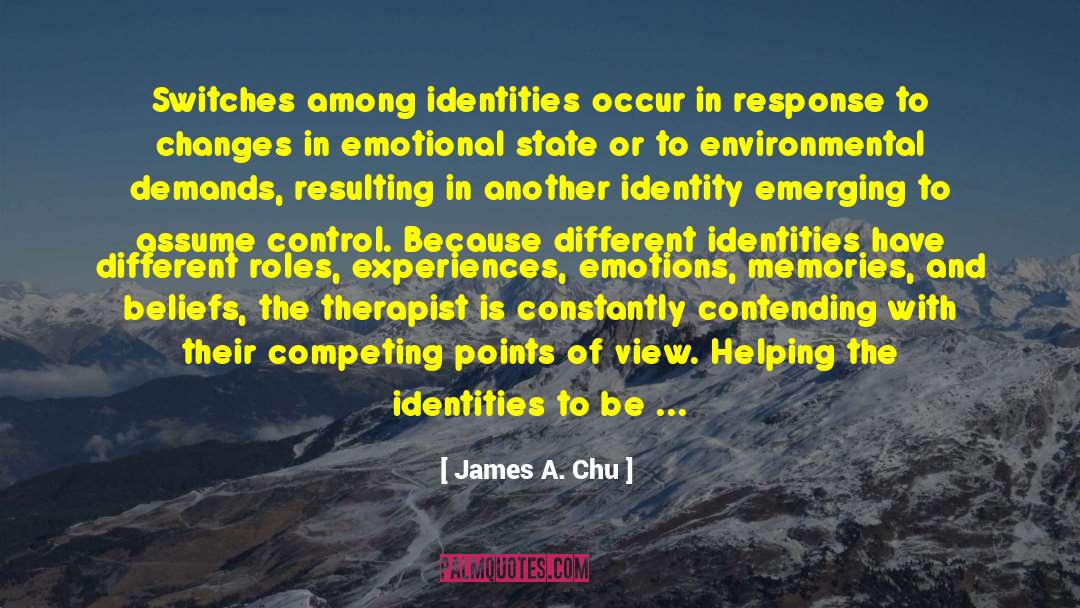James A. Chu Famous Quotes
Reading James A. Chu quotes, download and share images of famous quotes by James A. Chu. Righ click to see or save pictures of James A. Chu quotes that you can use as your wallpaper for free.
Instead of showing visibly distinct alternate identities, the typical DID patient presents a polysymptomatic mixture of dissociative and posttraumatic stressdisorder (PTSD) symptoms that are embedded in a matrix of ostensibly non-trauma-related symptoms (e.g., depression, panic attacks, substance abuse,somatoform symptoms, eating-disordered symptoms). The prominence of these latter, highly familiar symptoms often leads clinicians to diagnose only these comorbid conditions. When this happens, the undiagnosed DID patient may undergo a long and frequently unsuccessful treatment for these other conditions.
- Guidelines for Treating Dissociative Identity Disorder in Adults, Third Revision, p5
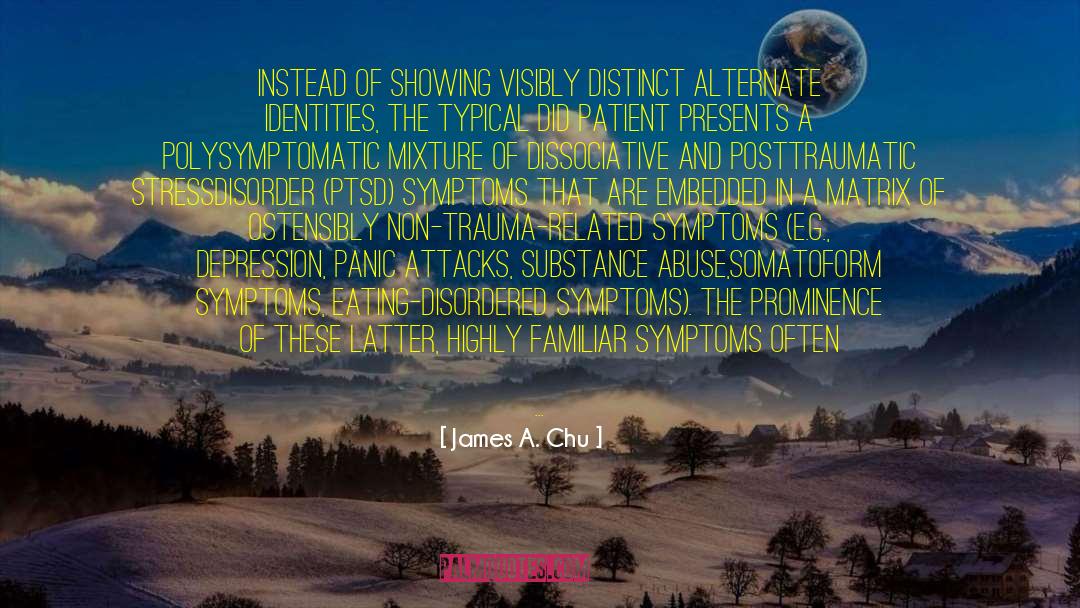
Posttraumatic stress disorder (PTSD) also has dissociative symptoms as an essential feature. PTSD has been classically seen as a biphasic disorder, with persons alternately experiencing phases of intrusion and numbing... [T]he intrusive phase is associated with recurrent and distressing recollections in thoughts or dreams and reliving the events in flashbacks. The avoidant/numbing phase is associated with efforts to avoid thoughts or feelings associated with the trauma, emotional constriction, and social withdrawal. This biphasic pattern is the result of dissociation; traumatic events are distanced and dissociated from usual conscious awareness in the numbing phase, only to return in the intrusive phase.
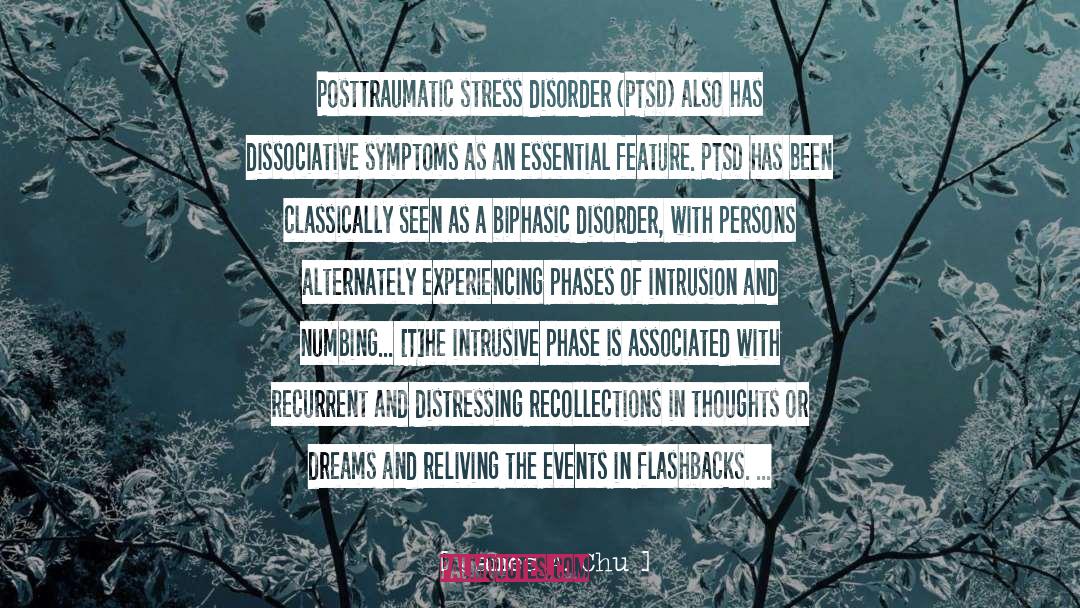
Dissociative symptoms - primarily depersonalization and derealization - are elements in other DSM-IV disorders, including schizophrenia and borderline personality disorder, and in the neurologic syndrome of temporal lobe epilepsy, also called complex partial seizures. In this latter disorder, there are often florid symptoms of depersonalization and realization, but most amnesia symptoms derive from difficulties with focused attention rather than forgetting previously learned information.
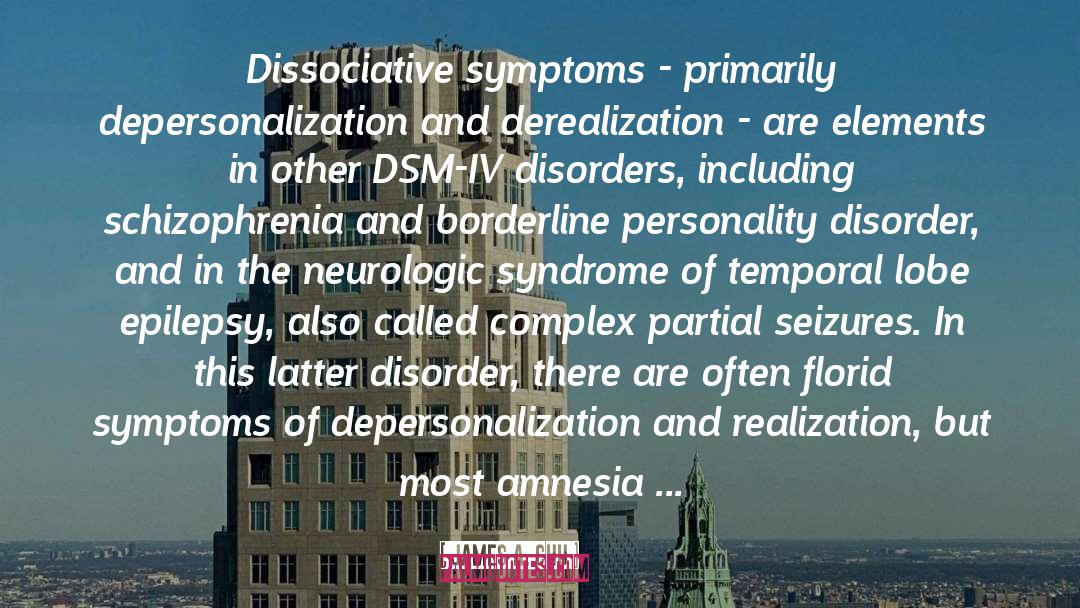
The DID patient is a single person who experiences himself or herself as having separate alternate identities that have relative psychological autonomy from one another. At various times, these subjective identities may take executive control of the person's body and behavior and/or influence his or her experience and behavior from "within." Taken together, all of the alternate identities make up the identity or personality of the human being with DID.
- Guidelines for Treating Dissociative Identity Disorder in Adults, Third Revision, p7
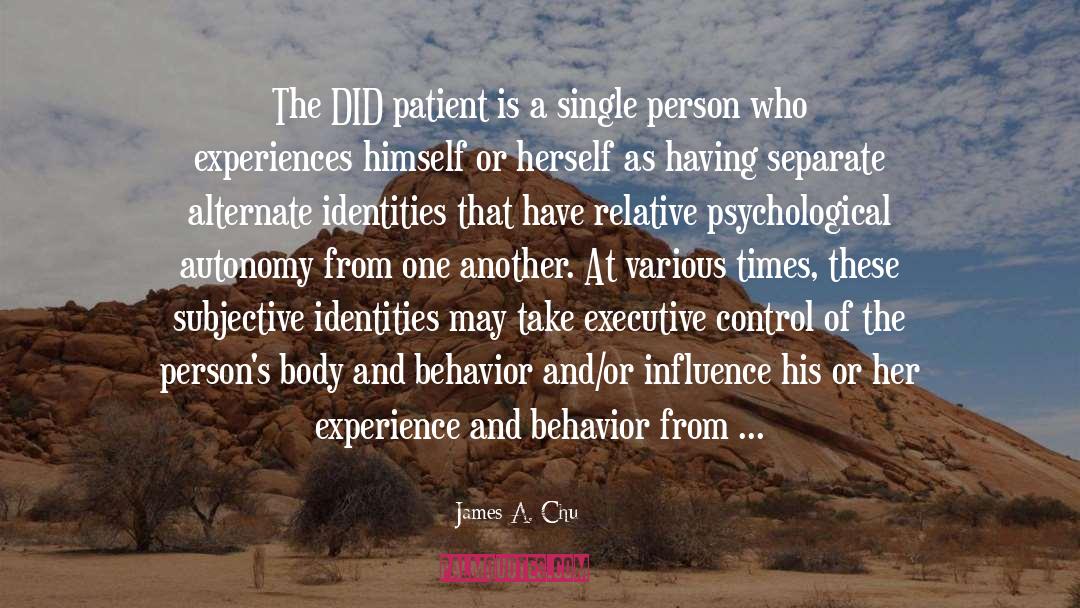
The DID patient should be seen as a whole adult person with the identities sharing responsibility for daily life. Despite patients' subjective experience of separateness, clinicians must keep in mind that the patient is a single person and generally must hold the whole person (i.e., system of alternate identities) responsible for the behavior of any or all of the constituent identities, even in the presence of amnesia or the sense of lack of control or agency over behavior.
From p8
International Society for the Study of Trauma and Dissociation. (2011). Guidelines for treating dissociative identity disorder in adults, third revision: Summary version. Journal of Trauma & Dissociation, 12, 188–212.
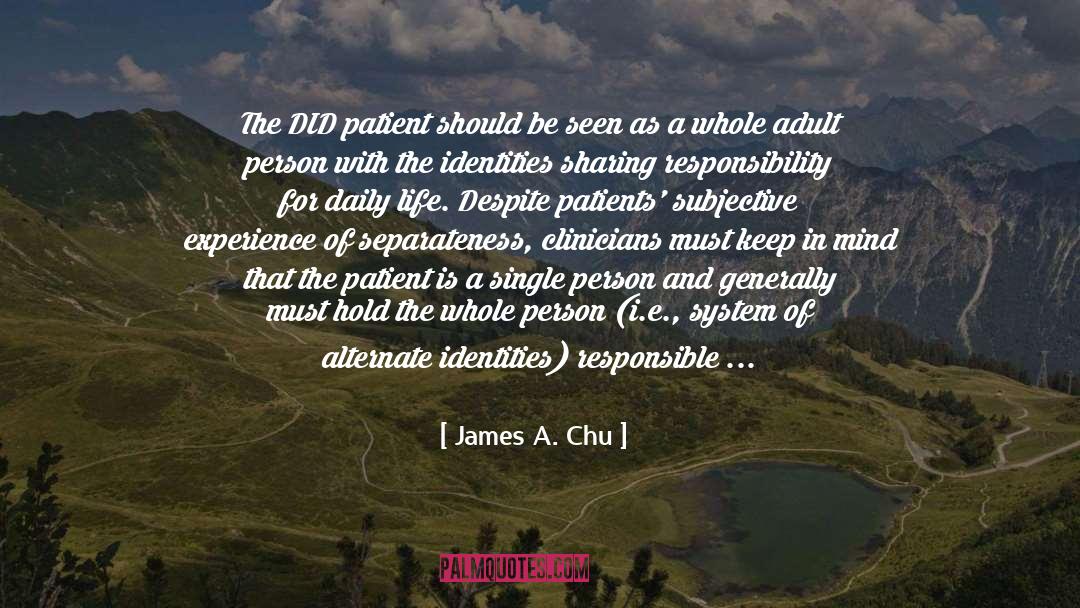
Extreme versions of DID occasionally develop in response to particularly horrific ongoing trauma (e.g., children exploited through involvement in years of forced prostitution), with so-called poly-frgamentation, encompassing dozens or even hundreds of personality states. In general, the complexity of dissociative symptoms appears to be consistent with the severity of early traumatiation. That is, less severe abuse will result in fewer dissociative symptoms, and more severe abuse will result in more complex dissociative disorders.
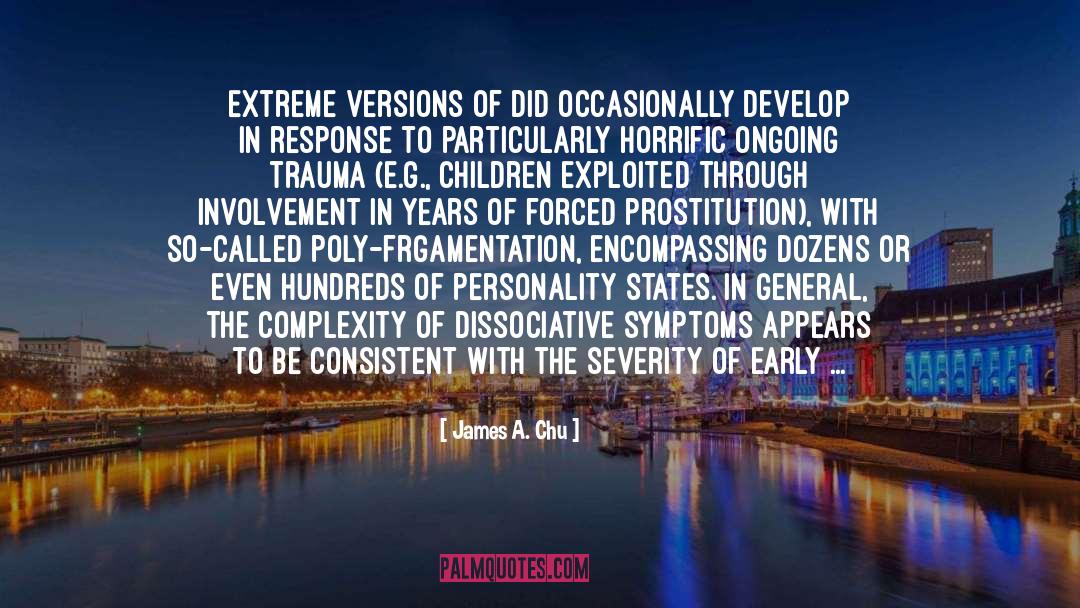
Switches among identities occur in response to changes in emotional state or to environmental demands, resulting in another identity emerging to assume control. Because different identities have different roles, experiences, emotions, memories, and beliefs, the therapist is constantly contending with their competing points of view. Helping the identities to be aware of one another as legitimate parts of the self and to negotiate and resolve their conflicts is at the very core of the therapeutic process. It is countertherapeutic for the therapist to treat any alternate identity as if it were more "real" or more important than any other.
Guidelines for Treating Dissociative Identity Disorder in Adults, Third Revision
